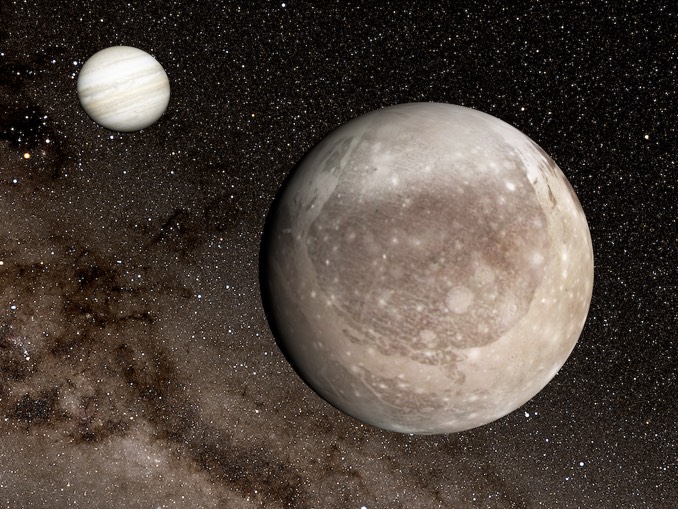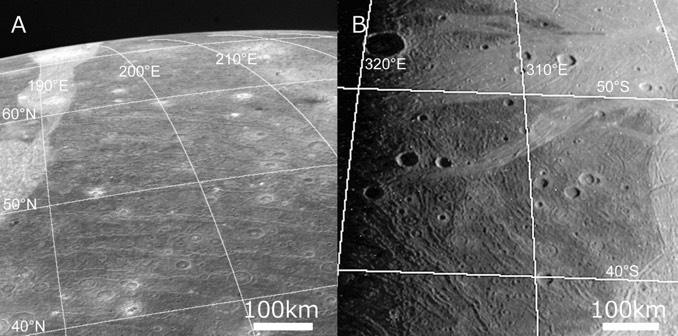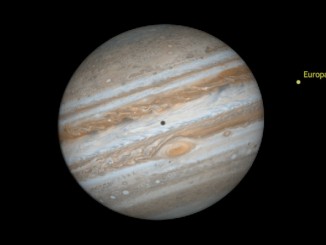
Researchers have found what may be remnants of the solar system’s largest impact structure, ancient concentric troughs that extend across almost the entire surface of Jupiter’s moon Ganymede.
Re-analysing images captured by NASA’s Galileo Jupiter orbiter and the Voyager 1 and 2 flyby missions, researchers from Kobe University and Japan’s National Institute of Technology Oshima College have identified concentric rings in patches of dark terrain that appear to be centred around a single point.
The presumed impact structure stretches 7,800 kilometres (4,847 miles) across Ganymede, the largest moon in the solar system. For comparison, Ganymede’s circumference is just 16,530 kilometres (10,271 miles).

Using simulations carried out by the “PC Cluster” computer at the National Astronomical Observatory of Japan, the team speculates the troughs could have been formed by the impact of an asteroid with a radius of 150 kilometres (93 miles) traveling at 10 kilometres per second (44,700 mph).
Lead researcher Naoyuki Hirata said the team is eager to learn more from the European Space Agency’s Jupiter Icy Moon Explorer mission – JUICE – scheduled for launch in 2022 and arrival in the Jupiter system in 2029.
“We hope that JUICE will confirm the results of this study and further advance our understanding of the formation and evolution of Jupiter’s moons,” Hirata said.
For the record, Jupiter’s moon Callisto is home of the largest confirmed impact crater, a structure with a radius of 1,900 kilometres (1,181 miles)



